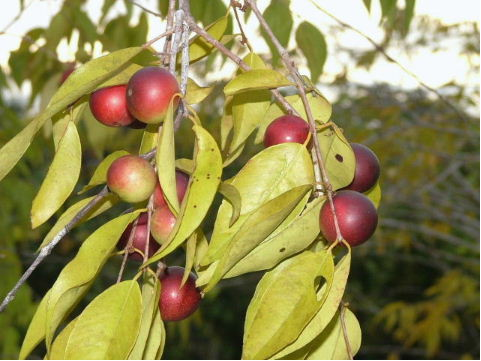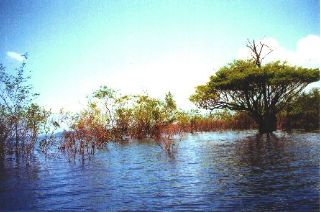Stayin' Alive
 Like all plants, Camu camu acquires its food by absorbing light
energy from the sun by a process called photosynthesis.
Photosynthesis is the process by which plants use the
energy from sunlight to produce sugar, which the process of
cellular respiration converts into ATP. This
process uses water and carbon dioxide which enters the cells of
the leaf and chlorophyll absorbs the light, converting the
sunlight energy into usable chemical energy.
After the two stage processes involved in photosynthesis, the
plant makes the sugar, glucose and releases the valuable oxygen.
Like all plants, Camu camu acquires its food by absorbing light
energy from the sun by a process called photosynthesis.
Photosynthesis is the process by which plants use the
energy from sunlight to produce sugar, which the process of
cellular respiration converts into ATP. This
process uses water and carbon dioxide which enters the cells of
the leaf and chlorophyll absorbs the light, converting the
sunlight energy into usable chemical energy.
After the two stage processes involved in photosynthesis, the
plant makes the sugar, glucose and releases the valuable oxygen.
Once the glucose is produced, it can be
transported to all parts of the plant via phloem (tubes that
transport food in plants). The sugar travels
down sieve tubes and is distributed throughout the entire plant.
The direction of flow is from the source (usually the
leaves) to the sink (the growing tissue that needs sugar).
This process of pushing sugars down sieve tubes requires
energy.
As the food is making its way down the tree, water is making
its way up. Water enters the root through
root hairs and is transported upward through the stem as a
result of cohesion in the xylem. The water
goes from high water potential to low water potential (from
roots to leaves). The water potential in the
leaves is low due to transpiration (evaporation) in the cell
walls of the leaves through
 stomata (pores on leaves for gas
exchange).
stomata (pores on leaves for gas
exchange).
The plant stores its food (the glucose)
throughout different areas, mainly the roots and also during
seed production, a lot of the food is stored in the fruit which
covers and protects the seed.

Camu camu grows
in the Amazon flood plain which means that each year during the
rainy season the river banks flood and the trees are submerged
underwater for up to four months.
This plant needs to overcome the high levels of water and
ultimately benefits from it. The water floods the
soil and the nutrient matter that has been mixed around the
rainforest is re-deposited. Therefore, this cycle
ensures rich nutrient soil for the Camu camu plant.